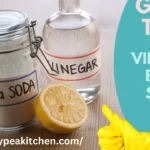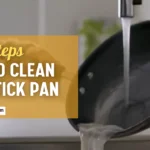Introduction
Rust from stainless steel is an issue that can have a major effect on the integrity and longevity of a structure. The corrosion occurs as a result of an electrochemical reaction between iron and oxygen in the presence of water or moisture.
Rust weakens structures by eating away at the metal, reducing their structural integrity and eventually causing them to collapse. It also affects the appearance of steel structures, making them look old and unattractive.
Rust prevention is essential to maintain the integrity of steel structures. The most common method of rust prevention is to apply a protective coating to steel surfaces which offers protection from moisture and oxygen as well as providing an aesthetic finish.
Protective coatings such as paint, galvanizing or powder-coating are highly effective in preventing the formation of rust, however this must be regularly maintained and reapplied. Other options for rust prevention include the use of sacrificial anodes or inhibitors which can be added to water or coolant systems to reduce the corrosion risk of steel structures.
Regular inspections should also be carried out as part of a maintenance program as this can help to identify areas of corrosion and any other damage that may have occurred. It is also important to regularly clean steel surfaces, removing dirt or debris which could be contributing to the corrosion process.
If rust has already taken hold on a steel structure then it must be treated promptly in order to avoid further damage.
Treating existing rust requires the use of specialist products such as rust converters or inhibitors which can offer short-term protection and help to reduce further corrosion. In some cases, more drastic measures may be required such as abrasive blasting or mechanical removal of corroded steel.
By taking preventative measures and carrying out regular maintenance, the risk of corrosion in stainless steel structures can be greatly reduced. This will ensure that steel structures remain strong and attractive for many years to come.
Overview of how to clean rust from stainless steel
Clean the steel surface with a wet cloth or sponge to remove any dirt or debris. Rinse the steel with water and dry it off completely. Apply a rust remover or converter to the rusty areas, following the manufacturer’s instructions carefully. Leave the rust remover or converter to work for 10-15 minutes. Scrub or wire brush the rusty areas to remove any loose rust. Rinse the steel again with water and dry it off completely. Apply a protective coating such as paint, galvanizing, or powder-coating to protect the surface from future corrosion.
Rust from stainless steel can have a serious impact on the integrity and longevity of steel structures. Taking preventative measures such as applying protective coatings and carrying out regular maintenance are key to preventing corrosion. If rust has already taken hold then it must be treated promptly in order to avoid further damage.
10 ways of how to clean rust from stainless steel
1.Make a paste with baking soda and water
Baking soda paste is one of the most effective methods for removing rust from stainless steel. To Make a paste with baking soda and water and apply it to the rusty area. Scrub the paste into the rust with a scouring pad or fine steel wool. Rinse the stainless steel surface clean and dry it off completely.
2.Use vinegar and baking soda
Vinegar and baking soda can be used to help remove rust from stainless steel. Vinegar is a mild acid that can slowly eat away at the rust, while baking soda is an abrasive that can help scrub away the loosened rust particles. Use vinegar and baking soda to create a fizzy mixture that works as a rust remover which should be applied to the rust spot. Leave the mixture for an hour and then wash it off with soapy water.
3.Use lemon juice and baking soda
Lemon juice and baking soda can be combined to create an effective paste that removes rust from stainless steel. Mix fresh lemon juice with baking soda until it forms a paste and apply it to the rust spots. Leave the mixture for an hour or two before scrubbing it off with steel wool or a scouring pad. Rinse thoroughly and dry completely.
4.Use cream of tartar and water
Cream of tartar and water can also be combined to create an effective paste that removes rust from stainless steel. Mix cream of tartar with water to form a paste and apply it to the rust spot. Allow it to sit for an hour or two before scrubbing off with steel wool or a scouring pad. Rinse thoroughly and dry completely.
5.Use a potato and dish soap
The combination of potato and dish soap is an effective way to remove rust from stainless steel. Start by scrubbing the rusted area with a scouring pad and dish soap. Then, cut a potato in half and dip it into some dish soap. Rub the soapy potato over the rusted area in a circular motion for several minutes. Rinse off the soapy potato and scouring pad with water to reveal the rust-free stainless steel.
6.Use a commercial rust remover
Commercial rust removers are an effective way to remove rust from stainless steel. The active ingredients in most commercial rust removers work by chemically reacting with the iron oxide (rust) on the stainless steel surface and converting it into a soluble material that can be removed with water or other cleaning agents. Rust remover products come in liquid, paste, or gel form and can be applied to the stainless steel surface with a brush, sponge, cloth, or other applicator.
Depending on the severity of the rusting, it may require multiple coats of remover to fully remove the rust from the stainless steel surface. After applying the rust remover, it’s important to thoroughly rinse off any residue and follow up with a protective coating, such as a wax or polish to keep the stainless steel looking its best.
7.Use a specialized stainless steel cleaner
Apply a stainless steel cleaner to the rusty areas and scrub them with a soft cloth or sponge. Leave the cleaner on for 10-15 minutes before rinsing off with water and drying completely.
Apply a protective coating such as paint, galvanizing, or powder-coating to protect the surface from future corrosion. This will help to keep your stainless steel looking like new.
8.Use a wire brush or steel wool
Wire brush and steel wool can be used to remove rust from stainless steel surfaces. Use gentle strokes in the direction of the grain when using either one. Be careful not to scratch the stainless steel surface and cause more damage than good. When using a wire brush, select one with soft bristles and make sure it is always kept clean. Steel wool can also be used to remove rust from stainless steel, but use a grade that is very fine so as not to scratch the surface.
9.Rinse the area with water
afterwards. After brushing the rust, you may need to use a wire brush or steel wool again to remove any loose rust particles. Rinse the steel again with water and dry it off completely. Finally, apply a protective coating such as paint, galvanizing, or powder-coating to protect the surface from future corrosion.
10.Prevent future rust buildup
Preventing rust from forming is always better than trying to remove it. Regularly inspect your stainless steel surfaces for any signs of corrosion, and take steps to address the issue quickly. Simple measures such as keeping the area clean and dry can help to prevent rust buildup. Applying a protective coating such as paint, galvanizing, or powder-coating can also help to protect the surface from further corrosion.
By following these steps, you can keep your stainless steel surfaces looking like as cleaning off dirt or debris, applying protective coatings, and carrying out regular maintenance are key to preventing corrosion in the future.
Conclusion
Removing rust from stainless steel is a straightforward process that can be done with the right materials and tools. From using natural ingredients like vinegar or specific cleaners, to brushing with wire brushes or steel wool, there are many methods available for removing rust from stainless steel and restoring its original shine. Remember that regular inspection and maintenance will help reduce the risk of future corrosion.



